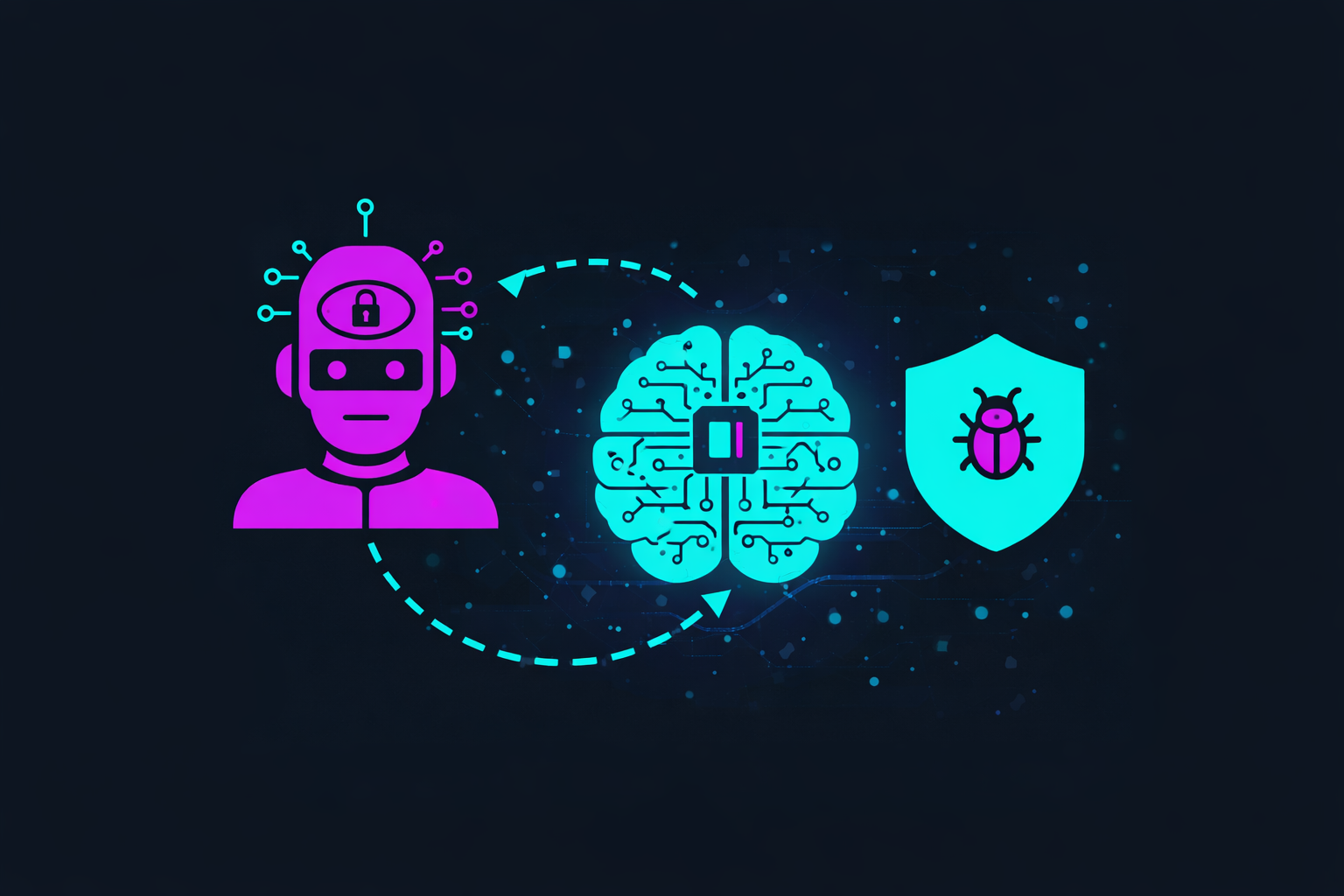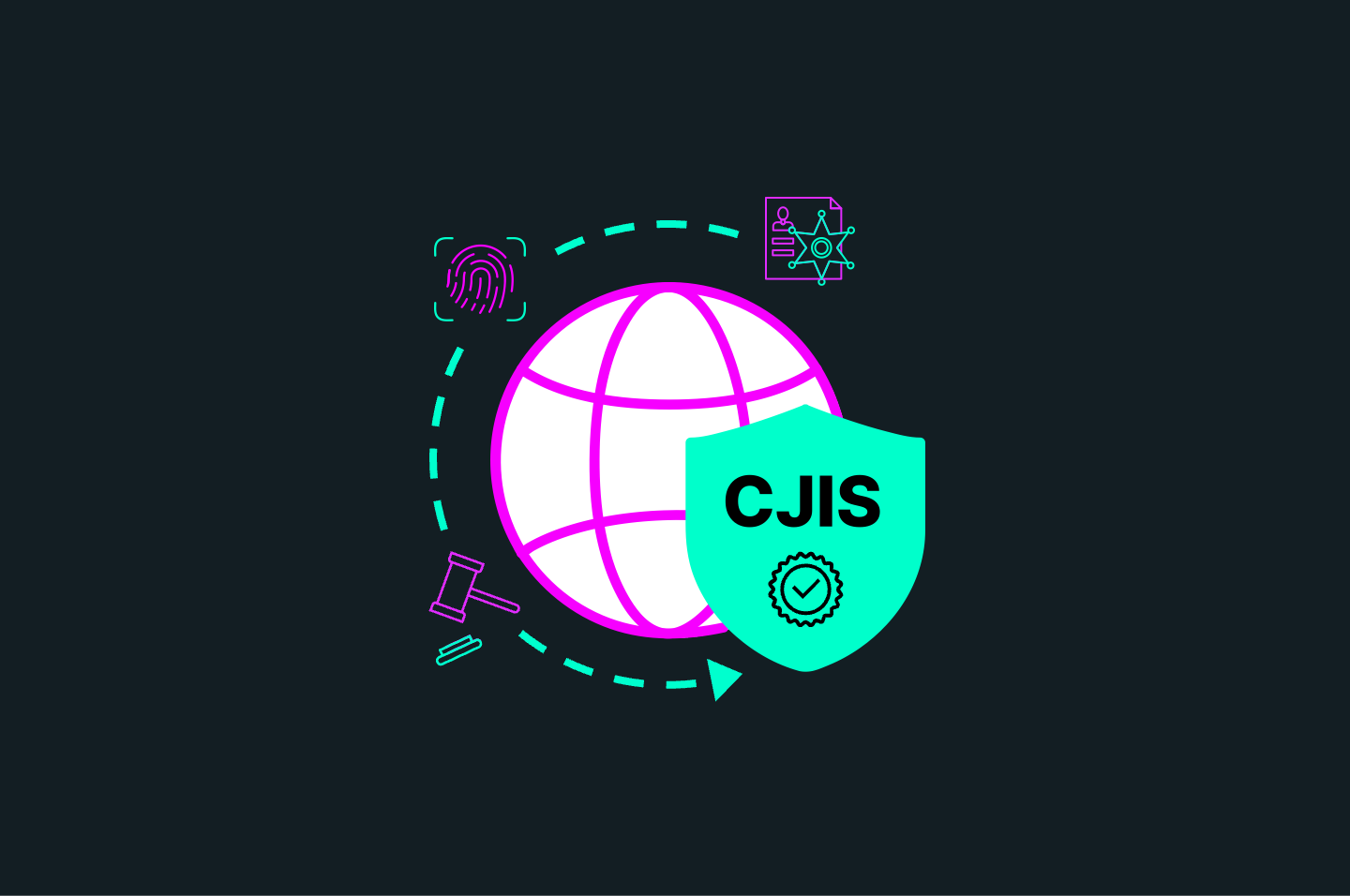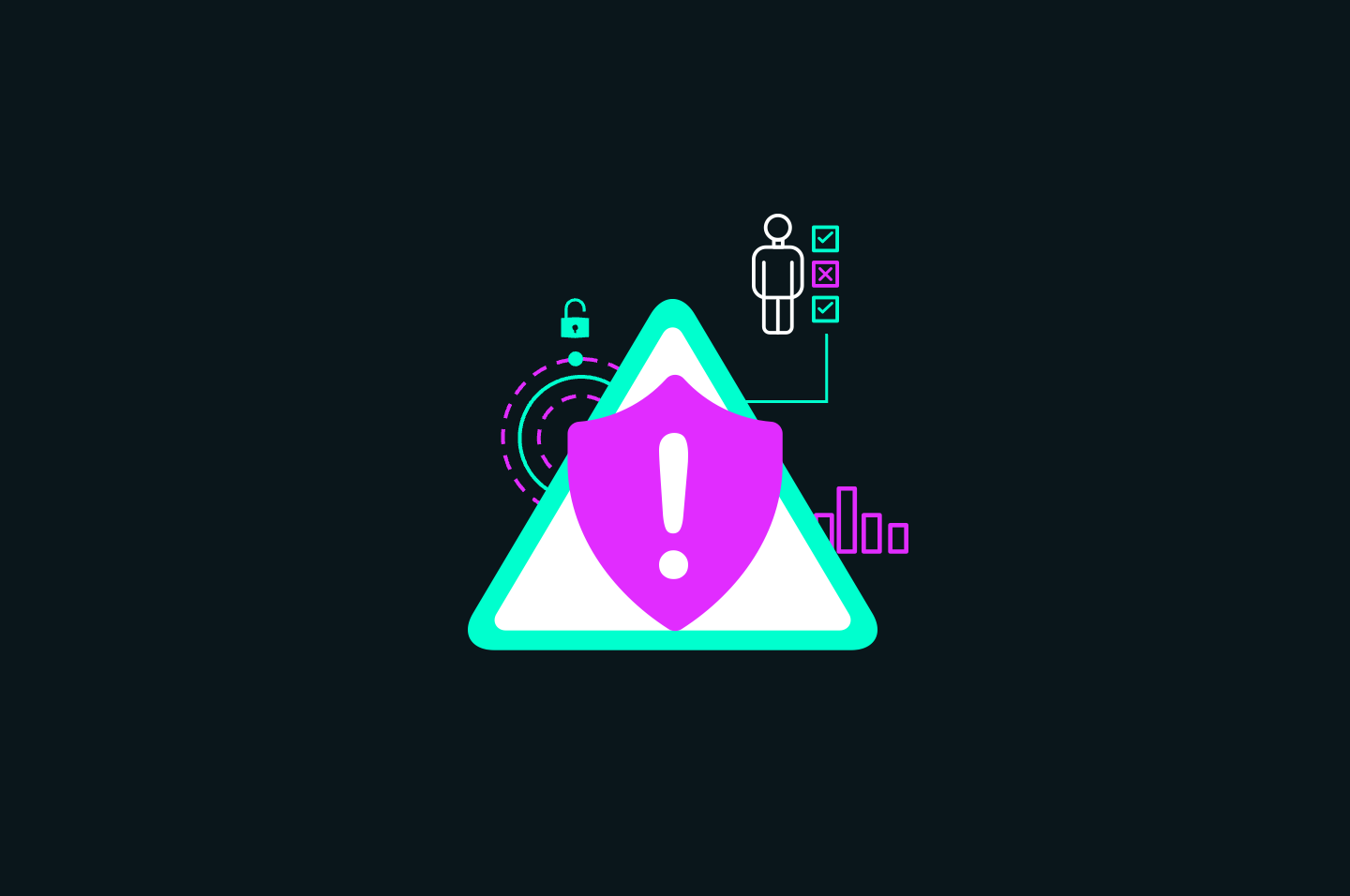Introduction
Key Takeaways

$9.5 trillion is a massive chunk of change. That’s the projected cost of cybercrime globally for 2024 and an eye-opening statistic, for sure.
There is no way to guarantee the safety of your digital infrastructure. Cybersecurity threats are always present and evolving. It doesn’t matter if your organization is large or small. You’re in somebody’s crosshairs. That’s what underpins the fundamental importance of risk management.
Cybersecurity risk management requires a plan for when all hell breaks loose — and to prevent that from happening in the first place.
What is Cybersecurity Risk Management?
Cybersecurity risk management comprises the tools, processes, and plans for identifying, assessing, and mitigating risks to digital information and its availability, while maintaining system resilience. Compliance with cybersecurity laws, regulations, standards, and best practices is an intrinsic part of risk management.
How your organization approaches cyber risk management depends on its:
- Industry
- Size
- Geography
- Risk tolerance
- Regulatory environment
Larger organizations are juicy targets for cyber criminals, particularly if they deal with financial transactions and data or individual healthcare information. Governmental organizations and critical infrastructure companies are also key targets. These organizations must adhere to robust cybersecurity risk management frameworks to minimize vulnerability and risk. They also often rely on Managed Security Service Providers (MSSPs) for state-of-the-art cybersecurity risk management software and expertise.
Small and medium-sized businesses (SMBs) are also attractive targets. What they lack in the size of the prize they make up for in ease of attack. Outsourcing cybersecurity risk management to an MSSP is highly beneficial to these organizations as well. With specialized expertise, advanced technologies, and best practices for proactive protection, MSSPs can provide a better, faster way to manage compliance.
Understanding Key Cybersecurity Risks
The first step in managing cybersecurity risk is to understand threats, vulnerabilities, and potential costs to your organization. The most common threats to your organization include:
Lack of awareness: All security boils down to the human factor. When employees don’t know about risks, what attacks look like, and the part they play in cybersecurity, your organization is especially vulnerable. It takes just one wrong click.
- 84% of employees respond to a malicious email within the first 10 minutes of getting it, according to Cybersecurity and Infrastructure Security Agency (CISA) statistics.
Insider wrongdoing: Whether by intent or ignorance, the actions of employees, contractors, and partners can compromise your cybersecurity. These acts range from inadvertently disclosing sensitive information to willful data theft and system sabotage.
- 60% of organizations have suffered at least one insider cyber attack, with 25% experiencing more than six, according to Security Magazine’s 2023 Insider Threat Report.
Phishing and social engineering: Attackers use social engineering techniques such as impersonation, false pretext, and baiting with bogus promises or rewards to deceive targets. Phishing is the most common example. Attackers use emails, text messages, social media, and fake websites to mislead people into providing data and access credentials for sensitive systems.
- Over 5 million phishing attacks were reported between July 2022 and June 2023, according to the Anti-Phishing Working Group. This represents a small subset of attacks, as most go unreported. CISA reveals only 13% of employees report phishing attempts.
Malware and ransomware: Software containing malicious code such as viruses, worms, Trojans, spyware, and ransomware opens your systems to theft and destruction. Disguised as harmless links or helpful attachments, malware can cause swift and far-reaching damage once released.
- 5.5 billion malware attacks were detected in 2022, according to a report from Infosecurity Magazine.
Unpatched software: Attackers exploit vulnerabilities in commonly used software like Microsoft Office as well as bespoke applications unique to a specific company. Once in, they can wreak havoc and steal tons of data. While patches are issued as quickly as possible, many organizations lag when it comes to installing updates and fixes.
- Some 18,378 software vulnerabilities in commercial software were detected in 2021, reports the National Institute of Standards and Technology (NIST).
The impact of a cybersecurity breach is far-reaching and long-lasting. Beyond the loss of assets, cybersecurity failures disrupt your business operations and lead to lost revenue. Theft of intellectual property undermines your competitive edge. Broken trust and confidence among customers, partners, and the public can cause sales to nosedive, stock prices to crater, and creditworthiness to fall. Financial and legal liabilities mount on top of regulatory actions and fines.
Creating a Sound Cybersecurity Risk Management Plan
A sound cybersecurity risk management plan takes a comprehensive approach to cyber risk across your organization. At a minimum, consider these components in your cybersecurity risk management program:
Identification
Make a thorough audit of your organization’s activities, systems, and assets. Consider technologies, connections, and relationships. How do insiders and outsiders such as vendors use and interact with them?
For each element, identify risks. What is your exposure to lost information, stolen assets, malfunctioning systems, regulatory fines, and costly lawsuits? What are the threats and where are they coming from? Lastly, consider compliance requirements.
Assessment
The identification stage gives you a comprehensive map of your cybersecurity risks. Next, you must assess the severity of risks and their likelihood. Put a dollar value on them, estimating operational costs, revenue losses, falling share prices, fines, legal bills, and the price of a client walking out the door. Even the smallest organization with simple systems can quickly get overwhelmed, particularly when it comes to compliance. Use a risk analysis template to think through risks methodically, keeping you organized and on track.
Mitigation
At the heart of your cybersecurity risk management plan is a set of strategies, policies, measures, and methods you use to lower risks and prevent problems — avoiding the all-hell-breaking-loose situations we mentioned earlier.
Start with your selected framework or frameworks, and build your cybersecurity risk management program to comply with them. Working with a compliance platform can help put a stop to duplicate work. You can also crosswalk between multiple frameworks to coordinate controls and simplify your plan to save time, money, and headaches.
Your cyber risk plan should include technologies like firewalls, encryption, user authentication and access management, program and task automation for updates and backups, and more. On the human side, you should have policies and procedures, defined roles and responsibilities, and training for employees, vendors, and partners. Integrating these technologies and workflows enables real-time security monitoring as well as faster cybersecurity and compliance management.
Monitoring
Cybersecurity isn’t a set-it-and-forget-it task. Attackers are becoming more sophisticated in tactics and techniques, and your organization is also evolving. Continuous monitoring is a must in risk management. It should cover changes in regulations and internal controls, vendors and employees, and technologies and processes. You want to stay in “I got this” mode, not “oh, s**t” mode.
Reporting
Measure plan progress and performance, then communicate results to decision-makers and stakeholders across your organization.
Reporting is vital to continuous improvement. You want to share evolving cybersecurity risks, document incidents, detailed responses, and impacts. Good reporting keeps you in compliance with relevant laws, regulations, and standards. And it holds people accountable. Lastly, reporting helps you optimize allocation of funds, staff, and technology.
How Can Cybersecurity Frameworks Aid with Risk Management?
A cybersecurity framework gives your security plan and activities structure. It’s a set of standards, best practices, and guidelines for preventing problems, staying compliant, and dealing with the inevitable “yikes” moments.
Your organization can use one or more of the 30+ commonly used frameworks, such as NIST CSF, ISO27001 and SOC 2, to improve your cybersecurity posture. Working within a framework — or more — you benefit from the thinking and experience of a vast array of experts. You don’t waste time reinventing the wheel. Instead, you have a systematic approach to addressing cybersecurity that is thorough, consistent, insightful, and uses proven strategies and controls.
Get maximum value from the frameworks you follow by taking time to understand their principles, objectives, and requirements. Customize them to fit your industry and organization. Compliance automation tools make it easier to evaluate how well you’re complying with multiple frameworks. You’ll be able to quickly assess gaps, identify risks, access status reports, and effortlessly stay audit ready. Consider automating how you crosswalk across frameworks for a more cohesive approach that eliminates duplicative work.
Streamlining Cybersecurity Risk Management with Technology
Choosing the right compliance platform will cut through the complexity of managing cybersecurity frameworks at scale. Features to look for include:
- Assessment capabilities that make it easier to identify risks and validate controls.
- Audit management for faster and easier evidence sharing.
- Risk manager functions to score and rank risks that also generate reports on how you stamp them out.
- Vendor management utilities to take the guesswork out of which third parties to trust.
- Framework management automation to prevent duplicate work and missing protections.
- Automated integration to keep all the parts of your cybersecurity risk management plan in sync.
Key Challenges in Cybersecurity Risk Management — and How to Overcome Them
While cybersecurity risk management is a central focus of security providers, it can be a challenge for organizations to handle on their own. Some of the issues MSSPs wrestle for you include:
- Rapidly evolving threats growing in number and sophistication. MSPs and MSSPs keep you ahead in the cyber arms race.
- Skill gaps are a constant reality. Working with security provders, you benefit from their highly trained and skilled personnel.
- Complex technology is both a weapon of attack and defense. Creating, integrating, and managing it all is a core benefit of working with a service provider.
- Compliance is yet another risk area. Cybersecurity failures cause an added burden in fines and potential legal costs. The right service provider can keep your company in continuous compliance.
- Resource constraints are a real barrier in cybersecurity risk management. Your MSSP can bring you best practices and technology to improve cost and resource efficiency.
Conclusion
The cost of cybercrime has become untenable for most organizations. The risk it poses to organizational assets is just the start. The losses, fines, and reputational damage of a security breach can turn it into a business-ending event.
Your business is always in an attacker’s crosshairs. Working with an service provider, adopting new cybersecurity technologies, and investing in a compliance platform can help you steer clear of danger.
.svg)





